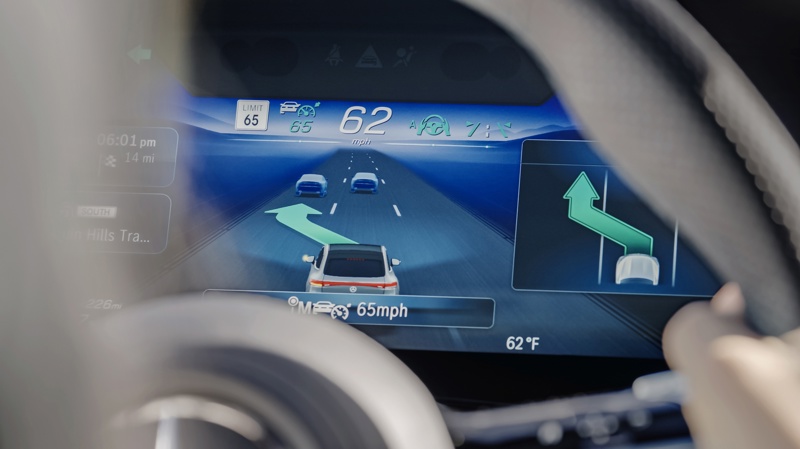Automated lane change
Automated lane change (ALC) is an advanced driver assistance system (ADAS) that is designed to allow a vehicle to change lanes on its own, without requiring the driver to steer the vehicle or take manual control.
ALC systems are typically found in higher-end vehicles and use a combination of sensors and cameras to detect other vehicles on the road and determine when it is safe to initiate a lane change.
Automatic Lane Change Mercedes EQS
This is typical how it works
- The driver signals the intention to change lanes using the turn signal.
- The ALC system uses a combination of sensors and cameras to scan the surrounding traffic and identify any obstacles or vehicles that may be in the way.
- The ALC system calculates the optimal path for the lane change, taking into account the speed and position of other vehicles on the road.
- If the path is clear, the ALC system will initiate the lane change by applying steering input to the vehicle.
- The ALC system will continue to monitor the surrounding traffic and adjust the vehicle’s speed and trajectory as necessary to complete the lane change maneuver safely.
- Once the vehicle is safely in the new lane, the ALC system will disengage and allow the driver to resume control of the vehicle.
The following video show how this works on Merceds Benz with their ALC system.
It is important to note that ALC systems are not yet capable of handling all driving scenarios and may require the driver to take control in certain situations, such as when the road conditions are poor or when there are unexpected obstacles in the way. Additionally, the driver must remain attentive and ready to take control of the vehicle at any time, as ALC systems are not intended to replace the driver’s role in operating the vehicle safely.
Most sold EVs globaly
Below, you find the top 10 most-sold EV models in the world. Click on the name for full info.
